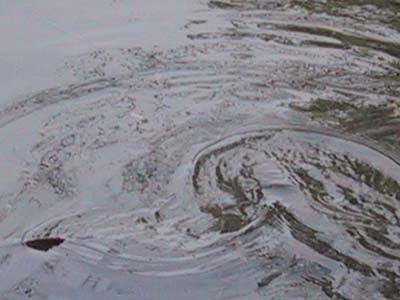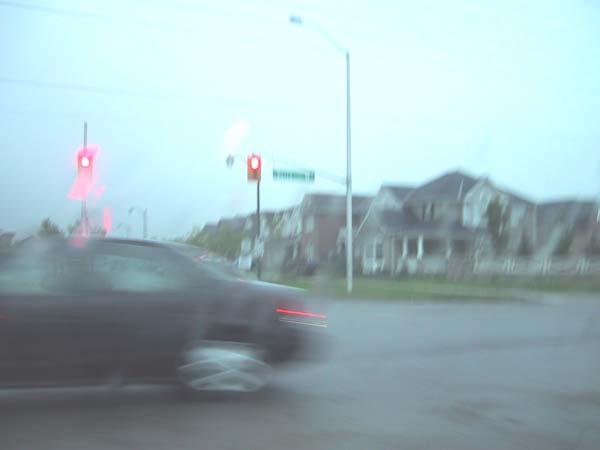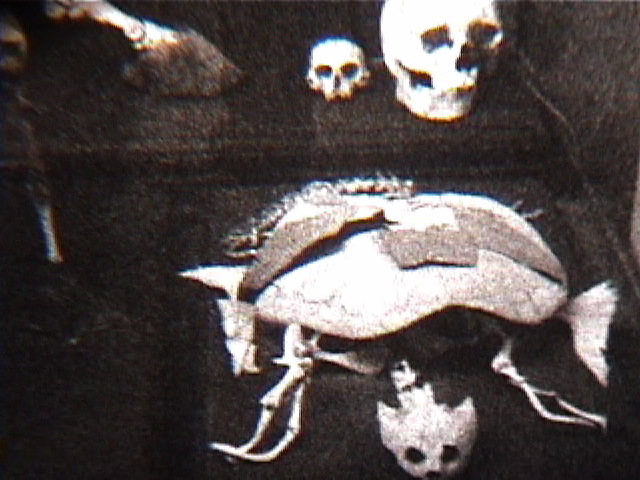mississauga mon amour

spawning carp

the homeland
I’ve been dropped down here into the metastasized suburban wasteland of Mississauga, where I happened to grow up. Ask anyone who lived in the area 30 or so years ago, and you will likely hear a familiar litany about how beautiful and buccolic this Southern Ontario landscape once was and how post-industrially bleak it now is, having been almost completely tiled over in endlessly repeating fractal undulations of suburban sprawl. Mississauga has become the ultimate edge city, comparable perhaps only to California’s San Fernando valley in the scale of its architectural stultification. Yet there is something touching about this suburban landscape’s role as a kind of failed utopia. As in a new geological epoch, Mississauga’s vanished cornfields, orchards and leafy ravines, are now smothered by a layer of concrete freeway decking and aluminum siding, the new mineral manifestation of the hopes and dreams of its million immigrants, for whom perhaps the very vastness of its banality promises some refuge from a far too turbulent world. Palestinian community centres now stand cheek-to-jowl with Guyanese restaurants and Chinese supermarkets and everyone’s children groove to the thudding beat of hip-hop as they wait on bleak streets for the buses to take them to a *home*, at once everywhere and nowhere.
Mississauga’s *placelessness* is most easily negotiated in an automobile and one feels constantly as if one is inhabiting some massive Yutaka Sone sculpture, for example when hurtling down its (increasingly arteriosclerotic) aorta, the venerable 401, which at one point splays out into 16 lanes, knotting and un-knotting like some kind of dystopian asphalt pasta. The traffic never stops and the 401’s incessant howling penetrates one’s very dreams. The harshness of Mississauga’s blue-white continental sky is attenuated by a fine sepia mist, which hangs everywhere. Composed of particulate rubber, pulverized brake linings and diesel soot, it makes everything look like some post-industrial Canaletto painting, at which someone had thrown a cup of tea.
Of course, I had to get into the Mississauga mood by re-reading j.g. ballard’s Concrete Island, in which the protagonist becomes stranded like Robinson Crusoe on a grassy traffic island, surrounded by freeways that he is unable to cross. While rooting around slobber-space, I came upon Pippa Tandy’s interesting exposition, The DNA of the Present in the Fossil Record of the Cold War(through the imagery of JG Ballard Related sources and Documents in Various Media), on the very cool Sleepy Brain site. Tandy notes that she originally presented this work in Microsoft PowerPoint, which makes it the most brilliant subversion of tedious and dumbed-down business software that I have ever seen.
For a relief from *mall-aria” we drove to the only intact marsh left on Lake Ontario’s heavily developed north shore, which is a tiny yet biologically diverse ecosystem, tucked between the monster homes and mini-malls. Remarkably, it was carp spawning season and dozens of thes ponderous, muscular fish were busily engaged in bouts of noisy, vigorous nuptial thrashing that churned up the marsh’s silty waters in a flash of metallic scales and blood-red fins. The carp themselves are immigrants to these New World waters and displayed such *eagerness to achieve their goal* (the carpish quality most admired by the Japanese) that they seemed oblivious to the rusted out shopping carts and tattered plastic bags littering the cossetting mud of their new found spawning beds.
Of course growing up in suburbia meant that I watched tons of TV, because (let’s face it) there was not much else to do. In fact, my crib was frequently parked up against the television so I could absorb English, which was not my first language. One of my earliest memories is of gazing, through feverish eyes, at the phosphorescence of an early 1960’s, radiation spewing, black and white picture tube that showed an animated image of three pairs of tapping, shoe-clad feet; one of them in a pair of brogues, the kind with numerous little round perforations in the leather. Of course it was the opening credits for the quintessentially saccharine, haute Cold War programme, My Three Sons.. This image was burned into my visual cortex so early, that it has become effectively indelible. The tapping shoes are what I see, when I manage to strip from my mind all other thoughts and images, in deep sleep, in meditation, in fevers. Thee shoes (for better or worse) have become my mantra.
Television was the she-wolf that suckled the spawn of the suburbs, and the opening credits held a particular fascination for us because they marked the transition from one state of *TV mind* to another – full of latent possibility, of narrative as yet untold: “Is it a re-run?” “Which Star Treck or Flintstones episode was it going to be?”, we wondered catatonically as we gazed at the glaring cathode oracle, through the swirling blue smoke haze of our parents’ Craven A Menthols, our bivouacs on the avocado green shag carpet reeking of nicotine and the rye and ginger cocktail sloshings of their boozy weekend afternoons.
Sometimes the opening credits, like oracle bones, could give the keen observer a clue as to what was in store. A case in point was the Dick Van Dyke show, which Super 8mm rebel genius John Porter once beautifully deconstructed in a 3 projecter piece, I saw him screen at Toronto’s (now sadly defunct) Funnel. Each simultaneously projected film contains an endless, carefully archived sequence of all the possible permutations and combinations of Dick Van Dyke’s interaction with the foot stool in the show’s opening sequence, which Porter had obsessively filmed with his Super 8 camera in late night sessions off his television screen. Sometimes Dick trips over the foot stool, sometimes he sidesteps it, sometimes he misses it entirely. Occasionally Porter’s hand enters the frame, pointing to the screen and on the soundtrack warns Dick(?) to “Watch that foot stool!” In its absurd depiction of a TV viewer attempting to affect a show’s outcome, Porter’s film serves as brilliant comment on how, for my generation of Cold War suburbanites, the lives of the ersatz families we watched on television, began in some way to replace our own. In their glibness and relaxed Americanism, this pantheon of electric shadows promised us a way through the landscape of cultural displacement and collapsing consensus that lay under the carbon-copy streets of our treeless neighbourhoods.
I miss the Funnel and all of the hi-jinx that happened there. It is where I first saw the films of tENTATIVELY, a cONVENIENCE and Jack Smith and countless other zealots of the underground. We all made films in those days, usually with thrift store Super 8 cameras and short-dated stock. We would film everything and anything, feverishly splicing together our little ribbons of pictures at late night kitchen tables, and sometimes developing our black and white stock in buckets in our bathtubs, so we could present the following day. The collection of non-sequitorious, *stream of consciousness* movies that I shot in those frenetic days, seem like magic to me now and I will continue posting the occasional digitized still to this weblog.

an old film
Comments are closed.



